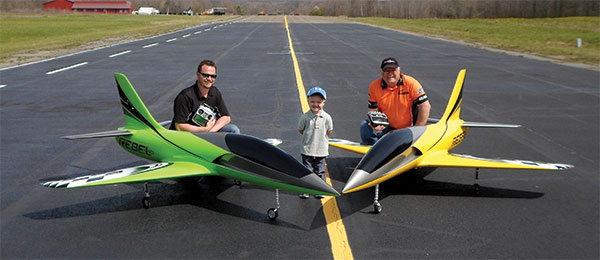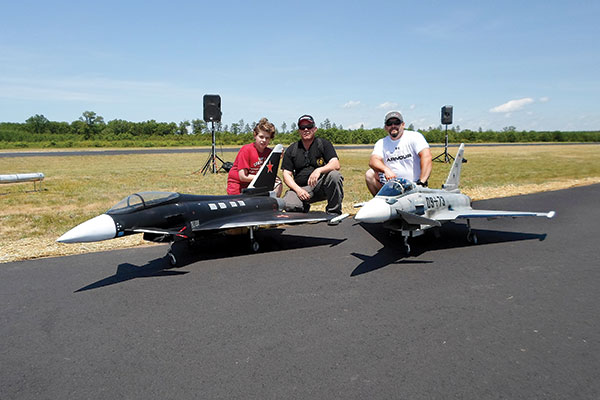Spinning up for Spring: Turbine waivers

Written by Jim Hiller Turbine Waivers Column As seen in the January 2017 issue of Model Aviation.

Why AMA for turbine pilots?
Turbine engines offer a level of scale realism and flat-out fun that many modelers enjoy!
Maintaining and flying a turbine aircraft requires some unique skills, and as a member of AMA, we can help pair you with other turbine enthusiasts who have demonstrated their ability to safely operate turbine aircraft to teach you the skills you need to be successful!
Our outstanding record of safety comes from a dedication to building a community of educated and responsible pilots.
To learn more about how to become a part of that community, and get the most out of your turbine aircraft, visit the AMA website or call 1-800-435-9262.
Maintaining and flying a turbine aircraft requires some unique skills, and as a member of AMA, we can help pair you with other turbine enthusiasts who have demonstrated their ability to safely operate turbine aircraft to teach you the skills you need to be successful!
Our outstanding record of safety comes from a dedication to building a community of educated and responsible pilots.
To learn more about how to become a part of that community, and get the most out of your turbine aircraft, visit the AMA website or call 1-800-435-9262.

How about a pair of CARF-Models Eurosports with some imaginative paint schemes? These great-performing jets are fun to fly. Nick and Sebastian, from the Chicago area, have made plenty of flights on their Eurosports.
The qualification flight is an opportunity to practice proper techniques. Begin by preparing the start area. Position your airplane in a safe position, with the tailpipe pointing in an appropriate direction and the fire extinguisher readily at hand. Use your ground support unit to monitor the turbine during startup. You need to monitor the sequences to see how the temperature and rpms are responding. With experience, you will be able to detect startup issues before they get out of hand and cause a hot start. Now is the time to demonstrate your flying skills. The most important thing is to show safe and controlled flight. You do not need to demonstrate the aerobatic skills of a precision Pattern national champion. The takeoff should be straight down the runway centerline, not varying more than 10 feet from centerline. It’s a tougher goal than you think if you are not experienced with flying off of a paved runway. Strive for the same goal on landing—steering the model straight after touchdown to a controlled stop. Ending off of the runway and in the grass will not impress anyone. These two items are some of the most difficult to perform and are in the demonstration flight for a reason. Off-runway excursions can endanger fellow pilots and spectators if a jet comes toward the flightline or a crowd. This year, I observed numerous pilots having trouble transitioning from large-propeller models to turbine aircraft. All had difficulty with landings, or more accurately, the landing approach. Jet aircraft do not have the drag that a propeller does when the engine is idling, slowing the airplane to a set glide speed. With a turbine model, a pilot must set the glide speed and rate of descent with the throttle. High-drag models that are in a landing configuration are easier to land in a steep approach angle. Some sport jets are weak in this area and have flat glides on final approach, requiring good speed control with the elevator to arrive at the landing spot. Not all aircraft are that way. There are many sport jets with good drag in the landing configuration that have high-drag flap setups or additional speed boards to aid in the landing approach. Deciding which model is a good introductory-level jet for you should be discussed with experienced jet pilots. The decision should always be based on your experience and skills. The quality of your landings can be improved with consistent, repeatable landing approaches. Arriving at the transition from the approach to the landing flare with the same speed, altitude, and approach angle will make your landings more repeatable. Most bad landings can be traced to a poor approach. Practice your landing approaches and don’t be too proud to go around when you are unhappy with the setup. A windy day will affect your approach. It’s a mistake to attempt to fly a long approach on a windy day. Keep your approach consistent, including the length. The farther out you are when you turn into the final approach, the more time you have to get behind your airplane. I have observed many approaches on windy days end up short, and then get behind on airspeed control, which typically stalls the model into a hard landing. It’s great to see so many new faces in the turbine jet community. It continues to grow, so jump in and enjoy. There have been plenty of new turbine waivers issued. The many aircraft available today are well designed and tailored for specific flight characteristics meant to optimize your flying experience. Introductory turbine jet models vary from foam ARFs and balsa kits to balsa ARFs and full-composite ARFs. Many of them are suitable for varying flying skills and experience. -Jim Hiller [email protected]












2 comments
Well Written Article
Great advice Len! Thanks for
Add new comment